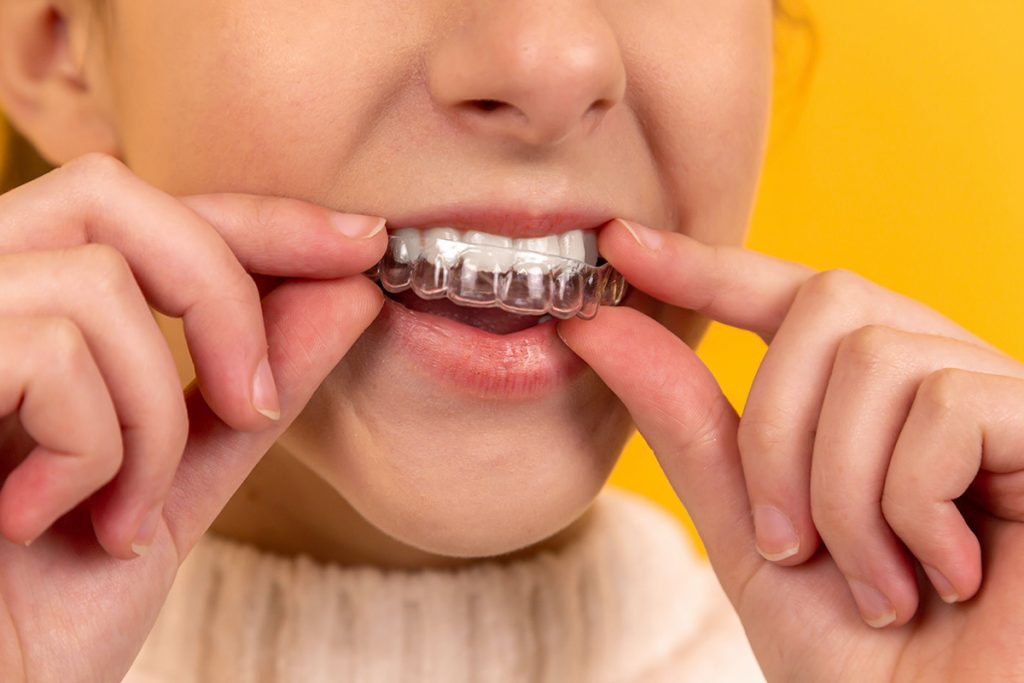Unsure whether you can wear an invisible aligner with fillings?
Here, common dental procedures and devices are discussed concerning their use with Invisalign W1.
Invisible braces and fillings
When you start any kind of orthodontic treatment, one of the first things that will be checked for during your consultation is cavities and signs of gum disease.
And any dentist worth their salt will not begin the process unless any cavities are filled and any underlying gum disease is treated. So, when you begin to use clear aligners, irrespective of how many fillings you have, there should not be an issue unless you have loose fillings. In this instance, the pressure applied by the aligners can cause them to come out; therefore, it is worth checking with your dentist before you begin wearing them.
Invisible braces and crowns
Having crowns fitted does not disqualify you from having invisible aligners; a tooth that has a crown is in essence just a tooth that has a very large filling.
And as the aligners can be custom-fitted to slot over your teeth with the aid of an intraoral scan, the final aligners will be able to accommodate a crown, provided it does not come loose.
If you suspect that one of your crowns has come loose, you should seek emergency dental treatment to have it repaired. Having a missing crown during orthodontic treatment can not only cause discomfort, but it can also cause the aligners to not track or fit correctly, so it is worth having this corrected as soon as possible.
Invisible braces and root canals
Root canals are a bit different than fillings and crowns as they are below the surface of the tooth in the root, which is ultimately a key part of the tooth that will need to be moved.
In short, if you have recently had a root canal, you will need to wait a minimum of 2 months before beginning any orthodontic treatment; this is to allow the root time to heal and for the pulp to adjust, along with the nerves remaining in the tooth.
Invisible braces and veneers

Like the other restoratives in this article, veneers should work fine alongside invisible aligners, provided that they are correctly fitted and securely in place.
Much like fillings and crowns (depending on the size), the pressure applied by invisible aligners can cause loose veneers to fall off, which will then need to be replaced to ensure that the aligners fit correctly.
If you suspect that your veneers have come loose due to invisible aligners, contact your dentist.
Invisible braces and bridges
This is a bit trickier to predict since there are commonly 2 types of bridges used in dentistry; a fitted bridge and a removable bridge.
If your bridge is fitted, there is less likely to be an issue with using invisible aligners because the bridge will simply move with the teeth. But if the teeth around the bridge become too close, this can cause the bridge to move, meaning you will need to have the bridge reshaped.
If the bridge is removable, there may be an issue with the teeth crowding, thus not making room for the bridge to sit comfortably in its previous position; this can once again be corrected with an adjustment to the bridgework.





